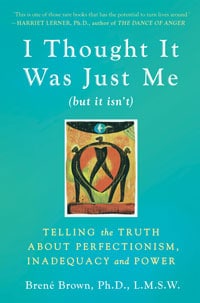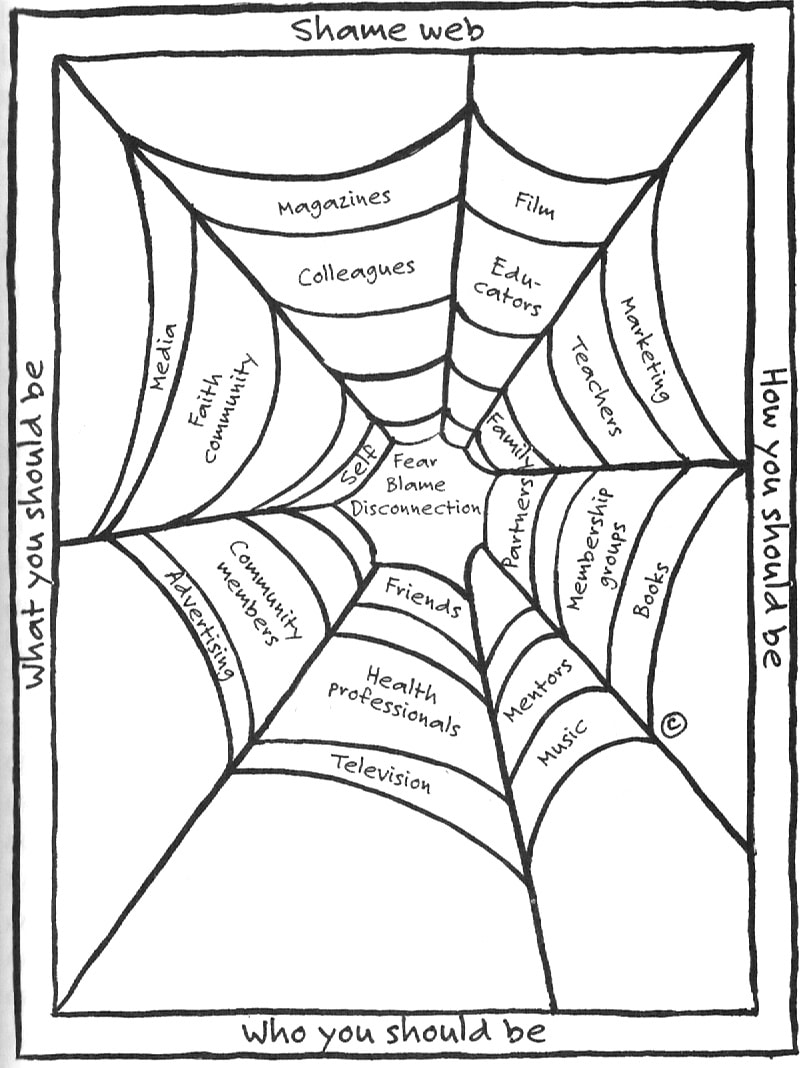In this post I am going share a book that has changed my life in deep and profound ways: Brene Brown’s I thought it was just me (but it isn’t).
A good friend expresses the power clearly: “With this book, I am finally able to get to the root-causes of the problems in my life.“
Shame

Brown created this definition (p.5):
“Shame is the intensely painful feeling or experience of believing we are flawed and therefore unworthy of acceptance and belonging.”
When we are in shame, we are in deep emotional pain and experience strong physical symptoms. In shame we feel like we have little or no value as human beings. Brown argues that shame has no positive purpose in our lives – it does not accomplish anything for us.
Guilt is a different story. With guilt we believe we are a good, valuable person, but have made a mistake. Guilt helps us correct our mistakes. It is very useful and has a positive effect in our lives. The confusion arises since much that we label as “guilt” is actually shame.
SHAME is at the centre of the infographic below. We will first consider the causes and then the outcomes of shame.

Unwanted Identities and Shame Triggers
Brown argues that Unwanted Identities are key drivers of shame. There are many influences in our lives that tell us:
- Who we should be
- What we should be
- How we should be
See diagram (p.19) on right from the book (used without permission). Hint: click on it to get larger image.
Twelve categories for shame drivers emerged when researching women: appearance/body image, motherhood, family, parenting, money/work, mental/physical health, sex, aging, religion, being stereotyped/labeled, speaking out and surviving trauma. (p. 73)
For men, many of the categories in the list apply, but there are some key extras around the need to look strong and succeed. Weakness, failure, and fear often lead to shame.
Each of us has a unique set of ways to feel shame. To survive and thrive, the first step is to identify our shame triggers. These are the the unwanted identities that impact us. Shame is about how we wish to be perceived in the world. Here are the two questions to ask to help understand your triggers (p. 83):
- I wish to be perceived as __________, ____________, ___________ and __________.
- I do NOT want to be perceived as __________, ____________, ___________ or __________.
When you do this exercise, please take special measure to be kind to yourself. We are all human.
Consequences of Shame
The top part of the infographic above shows some consequences of shame. In addition to feeling unworthy and inadequate, we loose any sense of safety, suffer from fear and with it our ability to take effective action. We feel disconnection from those around us and believe that no one will understand or appreciate us for who we are. Shame is an extremely debilitating state where we are very unresourceful. What can we do to recover?
A trap we fall in is to use blame as a “way to discharge hurt and pain”. When we blame others we shore up our emotions and it feels better. Sadly, this does not resolve the shame and only serves to mask our painful emotions.
How to Manage Shame
We can never be truly immune from shame, but we can develop what Brown calls “shame resilience”. Her prescription is:
- Understand our Shame Triggers – as discussed above, introspect on yourself when we are calm and capable.
- Practice Critical Awareness – in the moment, recognize that you are feeling shame and say it out loud or in your head.
- Reach Out – Call someone who is able to be supportive and listen with empathy around your issue. Do it immediately.
- Speak Shame – Tell the supportive person how you are experiencing shame and believe them when they tell you that your are a good person.
Closing
I read the book a little over a year ago and it triggered very positive sweeping changes in my life. The power of the book is in providing clarity in understanding a key problem and a simple model to make changes. The rest is hard work.
Acknowledgements




